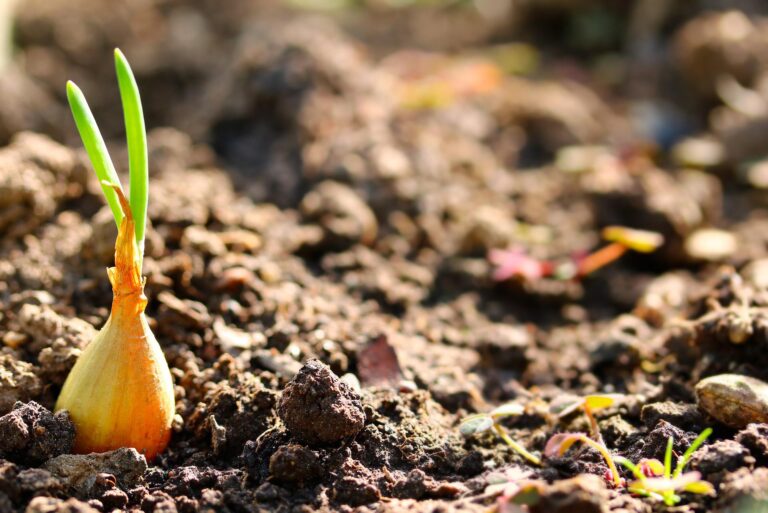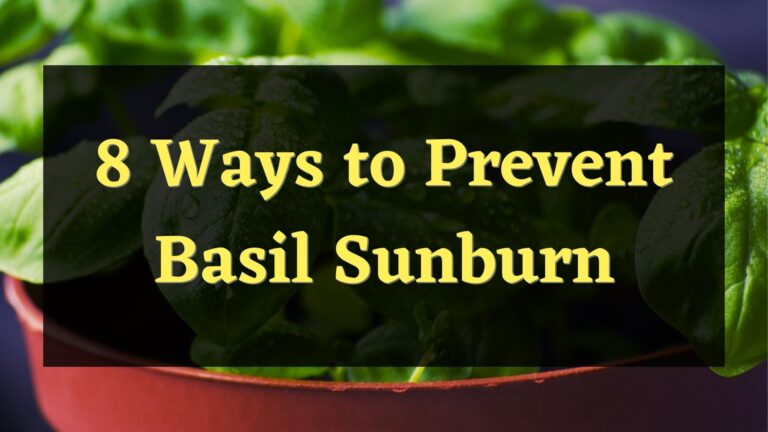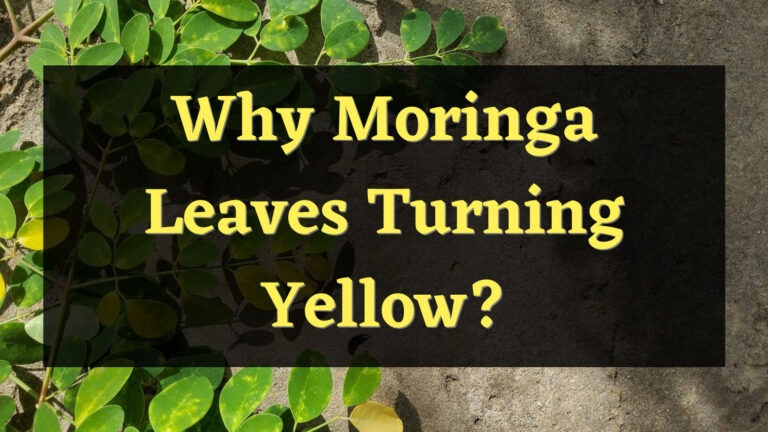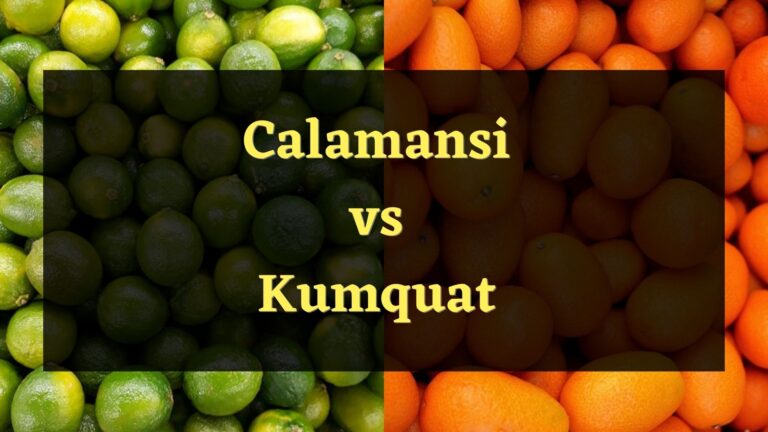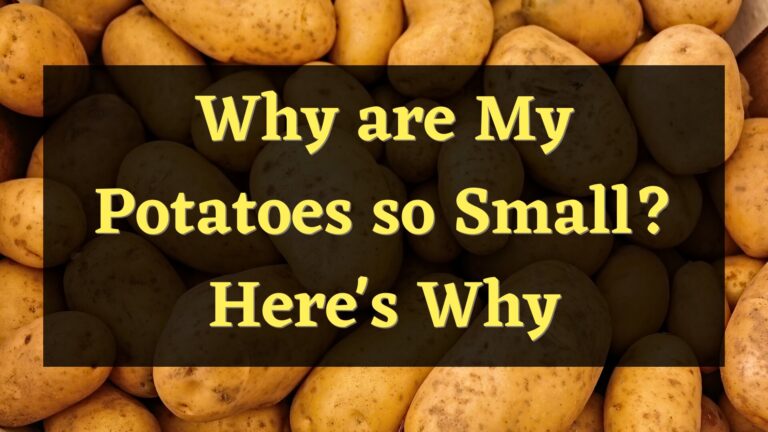Your garlic bulbs may be very small for a variety of reasons. Small garlic bulbs are frequently an outcome of faulty planting processes, inaccurate sowing, overcrowding, unsuitable soil, and improper watering. Let us examine each potential cause of your garlic’s small size and discuss solutions to ensure larger crops on the next harvest.
Reasons why your garlic bulbs are small
Planting the wrong kind of garlic
Before your new plants have even taken root, you could be setting yourself up for a big disappointment if you unintentionally plant smaller cloves from bulbs or the incorrect kind of garlic. Small bulbs may sprout later if small cloves from small bulbs are planted.
Garlic is one of those foods where bigger is usually better. Big cloves and big bulbs most likely result in producing additional big cloves and big bulbs. When you are choosing cloves to plant, be sure to save the largest and most spotless ones to replant in the soil.
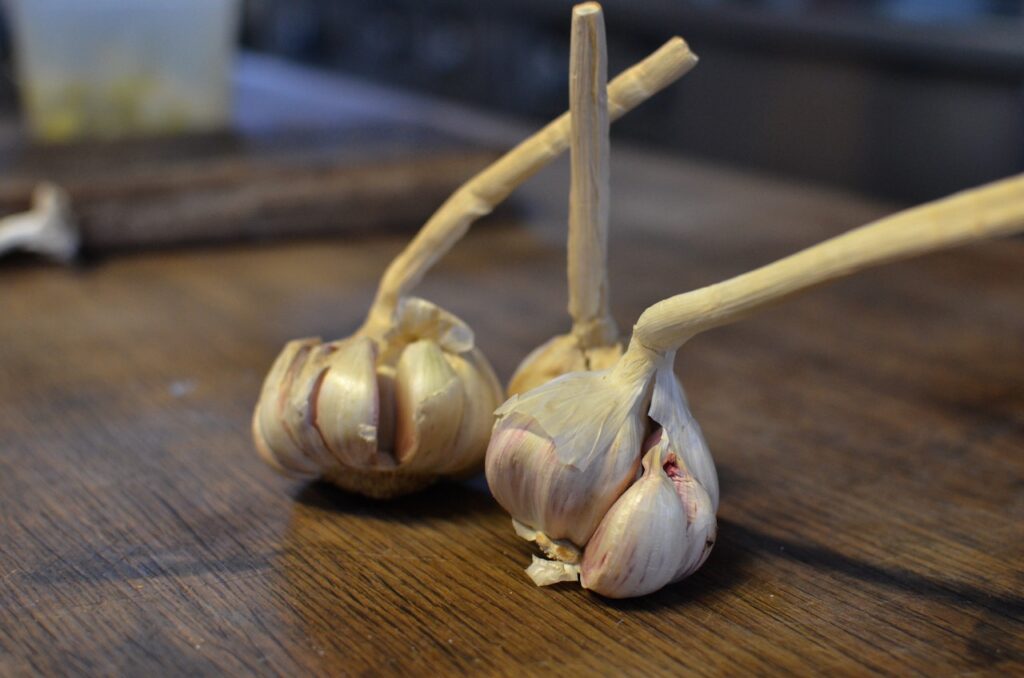
Planting at a wrong wrong time
A time of cold is necessary for the optimal development of garlic. Vernalization is the term used to describe this process. It is a process through which plants use the temperature to track the onset of each season. Using these cues, they will time their growth. Untimely garlic growth will have a lower likelihood of producing large and strong bulbs.
The best time to plant hardneck garlic varieties is in the fall. Most individuals suggest waiting between three and six weeks before. Although timing can be a little problematic, you basically need to give your freshly planted cloves enough time to grow their roots.
Overcrowding
Garlic plants require space in order to have the best chance of growing large. Garlik dislikes competition from any kind of plants or weeds around it. Garlic bulbs should be spaced at least three inches apart, but it is also recommended to have more than this. Garlic will still likely grow if it is packed closely together, but if it is given insufficient room, it will produce small bulbs.
Weeds are not a pleasant companion for garlic. As soon as spring arrives, begin pulling competitive, undesired plants from the ground. Along with planting, spreading mulch can aid in controlling unwelcome growth. Additionally, throughout the winter, it can shield your dormant plants from the bitter cold.
Unsuitable soil
It grows best in loamy and somewhat sandy soil. To keep the soil well-fed and well-draining, there needs to be a lot of organic matter present. Digging through a lot of fine organic compost before planting is the greatest technique to enhance the quality and drainage of dense, clay-like soil.
Bulbs will have to work harder to grow if the soil is very tough. Prior to planting, try using a spade to break up hard and dense soil.
Improper Watering
The garlic must be well watered to prevent it from drying out. It is a hardy plant that can withstand dry time, but doing so will prevent it from developing large bulbs. Maintaining thick layers of mulch to keep the soil moist is a smart decision if you live in an especially dry region. Throughout its growing season, you should keep the soil uniformly and slightly damp to ensure the soil drains properly and prevent the garlic from stagnating in water.
Overwatering can cause plants to decay before they are fully developed, which can result in smaller, or worse, wilted or ruined bulbs.
How do you increase the size of a garlic bulb?
- Pick organic garlic that hasn’t been chemically treated wherever possible. If not, you might be in for a disappointment when you plant your cloves and they do not root. In colder climates, hardneck types perform better. Softneck varieties, on the other hand, are better suited to warmer climates, such as those found in California, the United States’ leading producer of garlic. Artichoke, porcelain, and purple stripe are a few well-liked cultivars that consistently provide larger bulbs. If you wish to plant types of garlic that are less likely to result in reduced yields, you should keep an eye out for these kinds of garlic.
- Garlic that has been planted will become dormant once the cold season arrives and then begin to grow once the weather warms up in the spring. When planted too early in the fall, garlic can grow excessively and use up valuable energy before the actual growing season. If garlic is planted too late, the roots may not have enough time to establish a strong foundation. It might not have a strong start because of the warm weather. Similarly, it is important to plant the softneck varieties in the early spring so that they can receive enough cold weather to mature and establish themselves.
- If you don’t apply mulch to your garlic plants, aim to plant them approximately 3 inches deep; any deeper and it may be prone to freezing temperatures. On the other hand, if you want to make sure that bulbs have enough room to grow, you shouldn’t plant any deeper than 6 inches. If the soil pressure is too great, it may start to prevent bulb growth. Garlic typically begins to grow between the earliest hints of spring and the sweltering end of summer. If you can extend this time, your bulbs may have more time to grow much larger as a result.
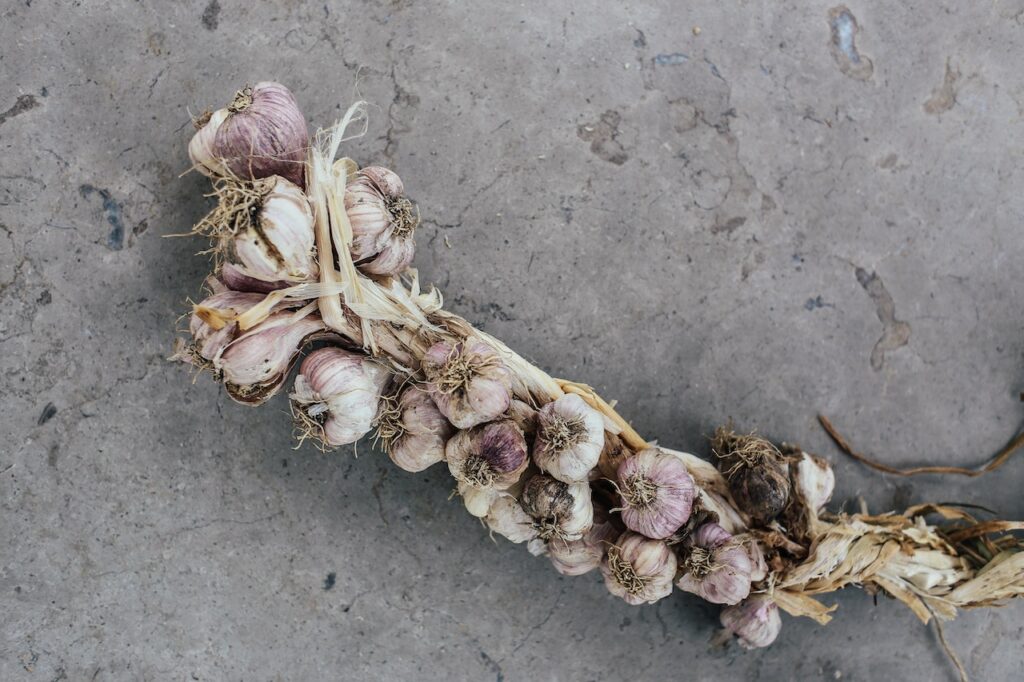
- You can add mulch to the soil to assist in controlling weeds over time, this can be a big contribution to the soil’s organic health. If your garlic plant is properly fed, it will also thrive. You can test your soil at home to determine how well-balanced it is for nutrients. In absence of such information, a good, all-purpose organic fertilizer ought to be adequate to guarantee that your soil is providing your garlic bulbs with the greatest nutrition.
- Scapes, which are green sprouts that grow directly from the top of the plant, are produced by hardneck garlic. As soon as they start to grow, their first curl cut them off the plant and harvests them. This can result in your garlic bulbs becoming larger. Regular scape harvesting encourages garlic to concentrate its energy on underground bulb development.
Conclusion
There are many reasons why your garlic plants produce small bulbs, but overall, it just produces what can depend on how you took care of it while it is still growing. There are many ways to prevent your garlic from producing small bulbs. They are also very simple and easy to do.

Elizabeth Mcmillan is a passionate gardener with a strong interest in plants. She used to be a teacher, but Elizabeth has spent the last few years immersing herself in the world of plants, learning about their biology and cultural value and trying out different ways of growing them in her own garden. Elizabeth Mcmillan loves indoor plants, succulents, and cacti, and her friends and family know her as a plant care expert.


